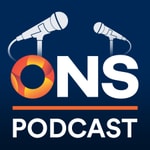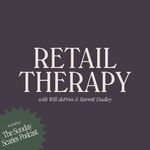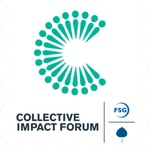The ONS Podcast – Détails, épisodes et analyse
Détails du podcast
Informations techniques et générales issues du flux RSS du podcast.

The ONS Podcast
Oncology Nursing Society
Fréquence : 1 épisode/8j. Total Éps: 376

Classements récents
Dernières positions dans les classements Apple Podcasts et Spotify.
Apple Podcasts
🇨🇦 Canada - medicine
26/07/2025#91🇺🇸 États-Unis - medicine
26/07/2025#89🇨🇦 Canada - medicine
23/07/2025#97🇺🇸 États-Unis - medicine
19/07/2025#95🇬🇧 Grande Bretagne - medicine
18/07/2025#75🇬🇧 Grande Bretagne - medicine
16/07/2025#76🇺🇸 États-Unis - medicine
12/07/2025#97🇺🇸 États-Unis - medicine
11/07/2025#84🇺🇸 États-Unis - medicine
10/07/2025#100🇺🇸 États-Unis - medicine
03/07/2025#99
Spotify
Aucun classement récent disponible
Liens partagés entre épisodes et podcasts
Liens présents dans les descriptions d'épisodes et autres podcasts les utilisant également.
See all- https://incompetech.com/
4607 partages
- http://www.incompetech.com
1399 partages
- https://988lifeline.org/
1203 partages
Qualité et score du flux RSS
Évaluation technique de la qualité et de la structure du flux RSS.
See allScore global : 68%
Historique des publications
Répartition mensuelle des publications d'épisodes au fil des années.
Episode 327: Journey of a Student Nurse: Choosing Oncology Nursing and the Value of a Professional Home
Saison 1 · Épisode 327
vendredi 30 août 2024 • Durée 55:11
“It’s not often in life that you find something that gives you this feeling, but I’m really so fortunate to have found mine, and I know this is only just the beginning, and I cannot wait to see what the future holds. I definitely owe a lot of that to the Oncology Nursing Society for opening up all those doors for me and really getting me into this field.” Samantha Paulen, BSN, RN, told Jessica MacIntyre, DNP, MBA, APRN, AOCNP®, 2024–2026 ONS president, during a conversation about student nurses entering the oncology field. MacIntyre spoke with Paulen and Tayler Covino, BSN, RN, both recent graduate nurses, about why they chose oncology nursing as a specialty.
Music Credit: “Fireflies and Stardust” by Kevin MacLeod
Licensed under Creative Commons by Attribution 3.0
Episode Notes
- NCPD contact hours are not available for this episode.
- Oncology Nursing Podcast™ episodes:
- ONS Voice articles:
- Nursing Students Connect Beyond the Classroom With ONS Resources
- One Oncology Lecture Isn’t Enough
- Nurse Residency Programs Improve New Graduate RNs’ Transition to Clinical Practice
- Train and Retain: From Orientation to Leadership, Here Are the Strategies That Experienced Staff Developers Use
- Innovative Programs Help Institution Grow Its Own Nursing Workforce
- Oncology Nurses Enhance Cancer Care Through Mentorship Opportunities
- Nursing Team Shares Process of Training a New Nurse in Oncology Outpatient Care
- ONS book: Cancer Basics (third edition)
- ONS courses:
- Clinical Journal of Oncology Nursing articles:
- ONS Learning Library: Nurse Orientation
- ONS Undergrad/Pre-Licensure Core Competencies
- ONS Career Guide
- ONS Resources for Student Nurses
To discuss the information in this episode with other oncology nurses, visit the ONS Communities.
To find resources for creating an Oncology Nursing PodcastÔ Club in your chapter or nursing community, visit the ONS Podcast Library.
To provide feedback or otherwise reach ONS about the podcast, email [email protected].
Highlights From This Episode
“I was first drawn to oncology nursing freshman year of high school when my grandmother, who was my ultimate best friend, was diagnosed with pancreatic cancer, and by the time they had caught it, it had metastasized to nearly every surrounding organ. And as I mentioned earlier, my grandmother was a nurse. So being a nurse, she was very stubborn, and when she finally had gone to the hospital after having a variety of symptoms, it was almost too late.” (Paulen) TS 7:27
“There’s really nothing more special to me than being able to develop relationships with my patients and support them throughout their journey. It’s incredibly rewarding making such a difference in their lives and being able to witness the strength and resilience of patients battling cancer, and it’s such an inspiration. Being able to provide my support both medically and empathetically is truly such an honor.” (Paulen) TS 10:04
“I also had a family member who was diagnosed with cancer. He was my uncle. And I witnessed firsthand the impact that compassionate and knowledgeable oncology nurses had on his treatment, and it really did leave such a lasting impact on me. … This experience deeply inspired me, and I just always wanted to be part of a team that offers hope and comfort to their patients and their families.” (Covino) TS 12:10
“I touched on my pediatric oncology clinical rotation, but I really do think it gave me insights into caring for younger cancer patients. This experience really emphasized the importance of a holistic approach to nursing, considering not just medical but also the emotional and developmental needs of children who are battling cancer.” (Covino) TS 24:05
“I also joined ONS as a student, so it was a large part of my college education and really gave me great access to resources, being able to attend meetings, and just stay updated on the latest in oncology nursing with the articles that they send out and just provided me with great networking opportunities with so many experienced oncology nurses who have such a wide breadth of knowledge.” (Covino) TS 24:27
“Practicing mindfulness and meditation has also been incredibly helpful in staying grounded and managing the emotional stress. These practices help me stay present. They reduce anxiety and maintain a positive outlook, even in these challenging environments. It’s really important to just set emotional boundaries as well to avoid burnout.” (Covino) TS 33:05
“There’s such a fulfillment that you get for making a significant impact on patients’ lives, and that’s what inspires me and should inspire others to consider this specialty. There’s also a lot of growth opportunities, and I think it’s really important to emphasize the growth opportunities within the field. And also just the advancements in cancer treatment can attract new nurses because there really is so much advancement in the field of cancer treatment.” (Paulen) TS 42:59
“I feel that specifically in this specialty, oncology nurses in particular are so much more willing to help versus they say that sometimes some nurses may eat their prey or whatever they might say. But I really think that oncology nurses are so willing to help, but sometimes you just have to really expose yourself and open up that door.” (Paulen) TS 45:07
Episode 326: Intramuscular Injections: The Oncology Nurse’s Role
Saison 1 · Épisode 326
vendredi 23 août 2024 • Durée 29:39
“One of the big misconceptions is that this is just a quick shot. And this is a patient’s treatment regimen. So, it is not just a quick shot. It is treatment, and we need to get it where it is supposed to go so that the patient’s, cancer treatment is not impacted,” Caroline Clark, MSN, APRN, OCN®, AG-CNS, EBP-C, director of evidence-based practice and inquiry at ONS, told Jaime Weimer, MSN, RN, AGCNS-BS, AOCNS®, manager of oncology nursing practice at ONS, during a conversation about administering intramuscular (IM) injections in oncology.
Music Credit: “Fireflies and Stardust” by Kevin MacLeod
Licensed under Creative Commons by Attribution 3.0
Earn 0.5 contact hours of nursing continuing professional development (NCPD) by listening to the full recording and completing an evaluation at courses.ons.org by August 23, 2026. The planners and faculty for this episode have no relevant financial relationships with ineligible companies to disclose. ONS is accredited as a provider of nursing continuing professional development by the American Nurses Credentialing Center’s Commission on Accreditation.
Learning outcome: Learners will report an increase in knowledge related to the administration of antineoplastic medications by IM injection.
Episode Notes
- Complete this evaluation for free NCPD.
- Oncology Nursing Podcast™ episodes:
- ONS Voice article: Oncology Drug Reference Sheet: Asparaginase Erwinia Chrysanthemi (Recombinant)–Rywn
- ONS books:
- Chemotherapy and Immunotherapy Guidelines and Recommendations for Practice (second edition)
- Clinical Guide to Antineoplastic Therapy: A Chemotherapy Handbook (fourth edition)
- ONS course: Introduction to Evidence-Based Practice
- ONS Huddle Card: Hormone Therapy
- American Journal of Therapeutics article: Body Mass Index: A Reliable Predictor of Subcutaneous Fat Thickness and Needle Length for Ventral Gluteal Intramuscular Injections
- Centers for Disease Control and Prevention resources:
- Concordia University Ann Arbor School of Nursing video: Ventrogluteal identification
- Elsevier Clinical Skills: Medication Administration: Intramuscular Injections—Acute Care
- Healthline article: Z-Track Injections Overview
- Journal of Advanced Nursing article: Does Obesity Prevent the Needle From Reaching Muscle in Intramuscular Injections?
- Journal of Clinical Nursing article: Dorsogluteal Intramuscular Injection Depth Needed to Reach Muscle Tissue According to Body Mass Index and Gender: A Systematic Review
- Journal of Nursing Research article: Gluteal Muscle and Subcutaneous Tissue Thicknesses in Adults: A Systematic Review and Meta-Analysis
- National Institute of Occupational Safety and Health: Hazardous Drug Exposures in Health Care
- Novartis education sheet: Additional Considerations for Dorsogluteal and Ventrogluteal Intramuscular Injections
- Oncology Nurse Advisor article: Large-Volume IM Injections: A Review of Best Practices
To discuss the information in this episode with other oncology nurses, visit the ONS Communities.
To find resources for creating an Oncology Nursing Podcast Club in your chapter or nursing community, visit the ONS Podcast Library.
To provide feedback or otherwise reach ONS about the podcast, email [email protected].
Highlights From This Episode
“More frequently oncology nurses are using intramuscular injection techniques when giving certain hormonal therapies for cancer treatment and for cancer symptom management. Some examples of those are fulvestrant for treatment of hormone receptor–positive, HER2-negative breast cancer, leuprolide as androgen deprivation therapy in prostate cancer. This is also used off label for breast cancer management. It’s used for premenopausal ovarian suppression and also in noncancerous conditions like endometriosis and uterine fibroids.” TS 2:04
“Inadvertent injection into the sciatic nerve is one of the most common causes of sciatic injury. It has significant morbidity associated with it. And even for drugs like fulvestrant, the prescribing information notes reports of sciatica, neuropathic pain, neuralgia, peripheral neuropathy—all related to dorsogluteal injection.” TS 6:09
“When administering an IM injection to someone who is cachectic, you don’t want the subcutaneous tissue to bunch up. So you can kind of stretch this over with your nondominant hand, as in the Z-track method, and then grasp the muscle between your thumb and index finger. That’s going to help you ensure that you’re getting that muscular injection.” TS 11:47
“Z-track is a way that you inject so that there’s no leakage back out into the subcutaneous space. Clean your area as usual. You displace the skin and the subcutaneous tissue that’s over that muscle, and then you inject slowly into the muscle. Once you remove the needle, then you release that tissue. And it kind of seals it over and prevents that leakage back up into the subcutaneous space.” TS 14:19
“I think ventrogluteal injection is less commonly done. There are documented issues with confidence in landmarking and giving it to that site, so practice is necessary. A great way to identify the ventrogluteal site on yourself to start is to stand up and put your hand at your side. You feel for the top of that iliac crest. Place your hand right below the iliac crest and then just start marching in place. You’re going to feel that muscle contraction right away. This also works when you abduct your leg. Abducting the leg is helpful when a patient is at a side-lying position to give a ventrogluteal injection—you feel that muscle contraction.” TS 17:06
“I wish it would be front of mind to encourage adverse event reporting related to any injection you’re giving. These types of reports—they drive improvement measures and monitoring. And then when things are underreported, it leads us to anecdotal reports. So really monitoring any change, trying to get some baseline data on adverse events with injection is really important.” TS 26:32
Episode 317: AYAs With Cancer: A Patient’s Experience
Saison 1 · Épisode 317
vendredi 21 juin 2024 • Durée 47:21
“I was in this really unique space of being 19. So I’m over the 18 cut-off of peds but diagnosed with Ewing sarcoma, but I was an adult. I was able and supposed to be making my own decisions but treated in a pediatric setting. And not everybody in that setting is expecting to talk to someone who is educated and understands what's going on,” Alec Kupelian, a cancer survivor and operations and program development specialist at Teen Cancer America in Los Angeles, CA, told Jaime Weimer, MSN, RN, AGCNS-BS, AOCNS®, manager of oncology nursing practice at ONS, during a conversation about advocacy for adolescents and young adults (AYAs) with cancer and his own cancer journey.
Music Credit: “Fireflies and Stardust” by Kevin MacLeod
Licensed under Creative Commons by Attribution 3.0
Earn 0.75 contact hours of nursing continuing professional development (NCPD) by listening to the full recording and completing an evaluation at courses.ons.org by June 21, 2026. The planners and faculty for this episode have no relevant financial relationships with ineligible companies to disclose. ONS is accredited as a provider of NCPD by the American Nurses Credentialing Center’s Commission on Accreditation.
Learning outcome: Learners will report an increase in knowledge related to the experience of AYA patients with cancer.
Episode Notes
- Complete this evaluation for free NCPD.
- Oncology Nursing Podcast episodes:
- ONS Voice articles:
- AYA Cancer Survivorship: Younger Survivors Face Different Challenges and Prefer More Casual Support Programs
- Nursing Considerations for Adolescent and Young Adult Cancer Survivorship Care
- Have Meaningful Conversations With Pediatric, Adolescent, and Young Adult Patients and Their Families
- AYA Champions Clinic Fills Gaps in Care and Addresses Unmet Needs
- ONS book: Oncology Nurse Navigation: Delivering Patient-Centered Care Across the Continuum (second edition)
- ONS course: Advocacy 101: Making a Difference
- Clinical Journal of Oncology Nursing articles:
- Adolescent and Young Adult Cancer Survivors: Development of an Interprofessional Survivorship Clinic
- Two Case Reports on Financial Toxicity and Healthcare Transitions in Adolescent and Young Adult Cancer Survivors
- Sexual Health: A Nursing Approach to Supporting the Needs of Young Adult Cancer Survivors
- Oncology Nursing Forum articles:
- ONS Huddle Cards:
- ONS Learning Libraries:
- Teen Cancer America
- Stupid Cancer
- Adolescent and Young Adult Cancer Congress
- 988 Suicide and Crisis Lifeline
- Supportive Care in Cancer article: An Actionable Needs Assessment for Adolescents and Young Adults With Cancer: The AYA Needs Assessment and Service Bridge (NA-SB)
- To discuss the information in this episode with other oncology nurses, visit the ONS Communities.
To find resources for creating an ONS Podcast Club in your chapter or nursing community, visit the ONS Podcast Library.
To provide feedback or otherwise reach ONS about the podcast, email [email protected].
Highlights From This Episode
“I joke a lot of the times that cancer was actually one of the best years of my life, and that’s not because it was good necessarily. It’s because that next year, after cancer, was probably the worst year of my life, and that drop-off into that early survivorship was a really brutal experience for me, and from talking to other cancer survivors, for them as well.” TS 3:25
“I talk to a lot of clinicians and a lot of young adult cancer survivors, and the more that I hear other people’s stories, the more clear it is to me that you never know who a patient is going to disclose information to. A lot of those symptoms or side effects or secondary issues that come about from cancer, which complicate every part of your life, it may not come to the [physician]. I was most comfortable with my nurses because I spent time with them.” TS 9:15
“You put your nose to the grindstone, and there’s a good guy, which is you, and a bad guy, which is cancer, and you just get through it. It’s very clear. And you have so much attention and dedicated support. And then when treatment’s over, everybody pats your back, dusts their shoulders, and says, ‘Congrats, go get out there.’ And all that structure goes away, and you are left floundering, trying to reconnect to what you were before and what life looked like. And it’s not always the same. … Most AYA patients would say treatment was the easy part. And those first two years after treatment were the hardest part of cancer—that reintegrating into life, that trying to contend with what just happened when you’re no longer in survival mode.” TS 26:14
“An AYA patient may have another 50 years of life after that. How does survivorship work for that? What is sexual health? Fertility? What is palliative care? … What does end-of-life care look for a patient who hasn’t gotten a chance to live their whole life? It’s really important stuff, and that is too much to ask any one person to figure out. And so Teen Cancer America wants to provide some of that framework.” TS 31:03
“Allowing nurses to say that, ‘There is going to be stuff that I don’t know, and that isn’t a failing on my part. Saying I don’t know something helps my patient have more confidence in me.’ I hear all the time clinicians are like, ‘I don’t bring up sexual health because I don’t know what to say, and I don’t want them to lose confidence in me.’ They don’t. They don’t lose confidence in you because you don’t know something. You’re a human, also. They lose confidence in you when you stop caring about them.” TS 43:44
Episode 227: Biomarker Testing, PARP Inhibitors, and Oral Adherence During Ovarian Cancer Maintenance Therapy
Saison 1 · Épisode 227
vendredi 30 septembre 2022 • Durée 43:36
“We found that nurses still needed clarity of terminology and the rationale for germline, somatic, and homologous recombination deficiency testing,” ONS member Paula Anastasia, MN, RN, AOCN®, clinical nurse specialist for UCLA Health in Los Angeles, CA, told Jaime Weimer, MSN, RN, AGCNS-BC, AOCNS®, oncology clinical specialist at ONS. Anastasia discussed the findings of a July 2022 ONS focus group that she facilitated on PARP inhibitor therapy, biomarker testing and terminology, and oral medication adherence for patients with ovarian cancer. This podcast episode is supported by a sponsorship from AstraZeneca. ONS is solely responsible for the criteria, objectives, content, quality, and scientific integrity of its programs and publications.
Music Credit: "Fireflies and Stardust" by Kevin MacLeod
Licensed under Creative Commons by Attribution 3.0
Episode Notes
- NCPD contact hours are not available for this episode.
- Clinical Update: PARP Inhibitors
- Survey: 2022 Member Feedback on Ovarian Cancer Treatment Focus Group Outcomes
- ONS Biomarker Database
- ONS Genomics and Precision Oncology Learning Library
- ONS Guidelines™ to Support Patient Adherence to Oral Anticancer Medications
- Oncology Nursing Podcast episodes:
- ONS Voice articles:
- Oncology Nurses’ Role in Translating Biomarker Testing Results
- Maintain Oral Adherence With ONS Guidelines™
- Help Patients Understand Biomarker Test Results and Clinical Trials Options
- Genetic Counselors Help Patients and Providers Understand Biomarker Testing Goals and Results
- Nursing Considerations for Ovarian Cancer Survivorship Care
- An Oncology Nurse’s Primer on Genomics and Biomarker Terminology
- Ovarian Cancer: Prevention, Screening, Treatment, and Survivorship Recommendations
- Clinical Journal of Oncology Nursing article: Shifting to a Biomarker Paradigm Across Cancer Care
- ONS video: Cancer Treatment Therapies Overview
- Oral Chemo Patient Education Sheets
- National Society of Genetic Counselors
To discuss the information in this episode with other oncology nurses, visit the ONS Communities.
To provide feedback or otherwise reach ONS about the podcast, email [email protected].
Highlights From Today’s Episode
“We found in this focus group that nurses still needed clarity of terminology and the rationale for germline and somatic/homologous recombination deficiency (HRD) testing. They all shared that those who worked in the infusion center in general medical oncology offices as opposed to the specific gynecologic clinics, that they weren’t as familiar with somatic and HRD terminology as you would suspect.” Timestamp (TS) 06:31
“As cancer care is evolving and patients are living longer and better, I think it’s we nurses who are actually the ones that are doing these behind the scenes. The most common barriers that were consistently discussed across the board were cost and insurance approvals. . . . Other issues were access to the results. Results are not always being uploaded into the patient’s medical record.” TS 09:51
“The nurses discussed wanting more knowledge of the mechanism of action with PARP inhibitors and how that alteration benefits patients with germline or somatic mutations. And most nurses did agree that their patients were offered germline testing at the time of diagnosis, but they were unclear as to when somatic or HRD testing was being done. . . . It was very inconsistent, so not all nurses knew where to find these results or to even know if it was done.” TS 16:54
“Education was key, and the nurses all agreed that it was important to identify who the appropriate patient would be that would most likely receive a clinical benefit, and who also would be following through or maintaining oral adherence. It was recommended to reinforce the side effects with the patients. . . . It was determined that patients should be informed that the goal of treatment of maintenance therapy was to prevent or decrease risk of recurrence.” TS 18:17
“It was recommended to assess patient adherence by asking open-ended questions. . . . The nurses agreed that the most common question to ask a patient would be: ‘How many doses did you miss this week? Or this month?’ Recognizing that people miss doses, and it’s not necessarily intentional, but it does happen, so we are validating and giving them permission to be honest with us.” TS 21:26
“I think having tools or resources—quick handouts—that they can give their patients that’s like an easy guide, and they can review it with the patient, but the patient if they have questions can follow up. I think it’s important to find out the patient’s needs and how they learn best, on a video or paper, that sort of thing. . . . But the nurses also wanted quick-references guides, just an overview of what the indication is, what needs to be done prior to ordering this, and the mechanism of action.” TS 30:32
Episode 226: Patient Education for Next-Generation Sequencing to Guide Cancer Therapy
Saison 1 · Épisode 226
vendredi 23 septembre 2022 • Durée 47:01
“Nurses can bridge the information gap and help patients better understand that the information received from next-generation sequencing (NGS) can really help to determine which treatment they will respond best to, if there are therapies that won’t be effective, or if there are clinical trials that are open to them based on the results,” Danielle Fournier, RN, MSN, APRN, AGPCNP-BC, AOCNP®, CORLN, advanced practice RN in the department of thoracic surgery at MD Anderson Cancer Center in Houston, TX, told Stephanie Jardine, BSN, RN, oncology clinical specialist at ONS. Fournier discussed the advancements being made in NGS technology and how it can be used to care for patients with cancer. This episode was produced by ONS and sponsored by Foundation Medicine.
Music Credit: "Fireflies and Stardust" by Kevin MacLeod
Licensed under Creative Commons by Attribution 3.0
Episode Notes
- NCPD contact hours are not available for this episode.
- ONS Next-Generation Sequencing Toolkit, Sample Report, and Discussion Tool
- ONS Biomarker Database
- Oncology Nursing Podcast episodes:
- ONS Voice articles:
- ONS clinical practice resources:
- Biomarker Testing Quick Guide
- Biomarker Testing for Genomics Variants: What to Know From the Laboratory Performing the Test
- Paired Somatic and Germline Testing Resource
- The Oncology Nurse’s Role in Somatic Biomarker Testing
- Biomarker Testing Nursing Process
- Understanding Genetic Variants Discussion Tool
- ONS Genomics Taxonomy
- ONS Genomics and Precision Oncology Learning Library
- International Society of Nurses in Genetics
- National Comprehensive Cancer Network Guidelines
- National Comprehensive Cancer Network Biomarkers Compendium
- Information on Sanger sequencing
- Information on the Genetic Information Nondiscrimination Act
- Video series: Seq It Out
To discuss the information in this episode with other oncology nurses, visit the ONS Communities.
To provide feedback or otherwise reach ONS about the podcast, email [email protected].
Highlights From Today’s Episode
“With next-generation sequencing (NGS), multiple biomarkers can be evaluated using one test. So, in cancer care, we’re learning that any given tumor may harbor a variety of variants. So, if we’re considering using in situ hybridization (ISH) or fluorescence in situ hybridization (FISH) to identify biomarkers, multiple assays may be needed and may need to be performed in order to test for multiple variants.” Timestamp (TS) 10:21
“There are multiple testing strategies that can be used with NGS technology, which is kind of what makes it so versatile. What type of testing is most appropriate really depends on the patient’s risk factors, their diagnosis, their cancer stage, what testing has previously been completed, and what tissue is available for analysis.” TS 12:00
“Within oncology care, there is a role for NGS in the identification and management of both solid tumors and hematologic cancers, and this role is likely just going to continue to expand. So, really there’s been an increased focus on genomic pharmacotherapy and targeted therapy, and this is playing an ever-greater role in the treatment of cancer. So, NGS will really continue to serve as a means to take a closer look at a patient’s cancer at the molecular level and hopefully match patients with treatments that will be most effective at treating their cancer.” TS 20:54
“In reality, there’s an expanding role for NGS testing in the diagnosis of many complex diseases. So, I think more than likely what we’re going to see is that the indications and utility of NGS is only going to continue to grow in both the oncology setting as well as the non-oncology setting.” TS 23:08
“The oncology nurse really plays a key role in several important steps along the way. The first place they may be involved is in the informed consent process. Many—but not all—hospitals require patients to sign consent for genetic and genomic testing and this is just acknowledging that the patient is making an informed and autonomous decision related to their health care. Nurses may also play a role in the collection of a tissue sample or blood sample. And once testing has been completed, nurses may play a role in discussing the NGS results with patients.” TS 24:03
“Nurses really can help to somewhat bridge this information gap and help patients better understand that the information received from NGS can really help to determine which treatment they will respond best to, if there are therapies that won’t be effective, or if there are clinical trials that are open to them based on the results. And these are all really important considerations for cancer treatment.” TS 36:21
Episode 225: Central Line Dressing Changes: Get It Right the First Time
Saison 1 · Épisode 225
vendredi 16 septembre 2022 • Durée 34:08
“Really knowing these steps can save our own nursing time and save our patient’s skin from all the dressing removals. If we’re not doing these dressings as much, we’re all going to be happier,” MiKaela Olsen, DNP, APRN-CNS, AOCNS®, FAAN, clinical program director in oncology at the Johns Hopkins Hospital and Johns Hopkins Health System in Baltimore, MD, told Stephanie Jardine, BSN, RN, oncology clinical specialist at ONS, during a discussion on the importance of properly changing central line dressings and recommendations in practice. You can earn free NCPD contact hours after listening to this episode by completing the evaluation linked below.
Music Credit: "Fireflies and Stardust" by Kevin MacLeod
Licensed under Creative Commons by Attribution 3.0
The planners and faculty for this episode have no relevant financial relationships with ineligible companies to disclose. ONS is accredited as a provider of nursing continuing professional development by the American Nurses Credentialing Center’s Commission on Accreditation.
Episode Notes
- The NCPD activity for this episode has expired, but you can still earn NCPD through many other Oncology Nursing Podcast episodes. Find a full list of opportunities.
- Oncology Nursing Podcast episodes:
- ONS Voice articles:
- Clinical Journal of Oncology Nursing articles:
- Central Line Care: Reducing Central Line–Associated Bloodstream Infections on a Hematologic Malignancy and Stem Cell Transplant Unit
- Central Line Care: Empowering Patients to Prevent Infection and Injury Via EPIC2
- Central Line–Associated Bloodstream Infection Prevention: Standardizing Practice Focused on Evidence-Based Guidelines
- ONS book: Access Device Standards of Practice for Oncology Nursing
- ONS courses:
- ONS videos:
- American Journal of Infection Control article: Implementing a Program to Standardize Central Line Maintenance
- Critical Care article: Ultrasound-Guided Central Venous Catheter Placement: A Structured Review and Recommendations for Clinical Practice
- Critical Care Medicine article: Dressing Disruption Is a Major Risk Factor for Catheter-Related Infections
- Association for Vascular Access
To discuss the information in this episode with other oncology nurses, visit the ONS Communities.
To provide feedback or otherwise reach ONS about the podcast, email [email protected].
Highlights From Today’s Episode
“One of the most important points at which a line can become infected is at the insertion site. So that central line dressing is of the utmost importance. We cannot ignore it and we have to inspect it frequently and teach our patients to do the same so that they don’t have an infection caused by bacteria getting into that insertion site.” Timestamp (TS) 04:28
“If we don’t get the dressing right and we don’t do a good job with it, it’s not going to be clean, dry, and intact. It’s going to come off too soon. We really want our transparent, highly moisture-permeable dressings that we put over our central line catheters to stay on and meet the guidelines to stay on for seven days, and then we need to do a dressing change. If they come off sooner and you’re having to change them more frequently, then that can increase the risk of central line–associated bloodstream infections.” TS 12:07
“It’s really important that when you are doing these dressings, you have a very simple procedure in place to validate skill for the staff, and they do the same steps every time. But it’s very important that they do all the steps and that they always make sure that they have good dry time in between every step.” TS 13:10
“Bleeding is definitely a challenge, and sometimes it’s related to the way the line was inserted, if they used a cutting mechanism at the site instead of using a dilation. Sometimes the root of the problem can be that you have to go back to the people who inserted the catheters and tell them about the downstream effects and tell them some of the techniques.” TS 20:05
“If you stack dressings on top of your transparent dressing, it can no longer breathe. And now, it is going to trap moisture under there and cause infection. How you apply each of these chemicals, the dry time—there is definitely a science behind doing a dressing change. So really knowing these steps can save our own nursing time and save our patient’s skin from all the dressing removals. If we’re not doing these dressings as much, we’re all going to be happier.” TS 29:37
Episode 224: Meet the ONS Board of Directors: Nevidjon, Geddie, and Garner
Saison 1 · Épisode 224
vendredi 9 septembre 2022 • Durée 27:35
What is it like to guide a professional association that serves more than 100,000 oncology nurses? ONS Chief Executive Officer Brenda Nevidjon, MSN, RN, FAAN, and Directors-at-Large Patricia (Patty) Geddie, PhD, APRN, AOCNS®, FCNS, and Danya Garner, PhD, RN, NPD-BC, OCN®, CCRN-K, reflect on their experiences with ONS, how a diverse Board supports a diverse membership, and how you can get involved in ONS leadership.
Music Credit: "Fireflies and Stardust" by Kevin MacLeod
Licensed under Creative Commons by Attribution 3.0
The planners and faculty for this episode have no relevant financial relationships with ineligible companies to disclose. ONS is accredited as a provider of NCPD by the American Nurses Credentialing Center’s Commission on Accreditation.
Episode Notes
Check out these resources from today’s episode:
- The NCPD activity for this episode has expired, but you can still earn NCPD through many other Oncology Nursing Podcast episodes. Find a full list of opportunities.
- ONS Leadership Process
- ONS DEI Commitment Statement
- Oncology Nursing Podcast episodes:
- ONS Voice articles:
- Find Your Voice With ONS’s Leadership Development Committee
- New Selection Process Supports Diversity on the ONS Board of Directors
- Nursing Leadership Has Space for You and Your Goals
- Boards and Committees Need Oncology APRN Voices. Will You Step Up to the Challenge?
- Nursing Representation Is Critical in All Industries—Even Those Outside of Health Care
- ONS Leadership Learning Library
- ONS Strategic Plan
- Find an ONS chapter near you.
To discuss the information in this episode with other oncology nurses, visit the ONS Communities.
To provide feedback or otherwise reach ONS about the podcast, email [email protected].
Highlights From Today’s Episode
Garner: “Obtaining a PhD in nursing has always been a goal since I entered my initial program, because I’ve had the goal to always teach and give back to nurses. I am the first person in my family to obtain a PhD and was encouraged by my family to acquire more education. They didn’t necessarily say, ‘You need to get a PhD,’ but rather, ‘Get the education you need to fulfill your life goals,’ and I’ve really seeded that throughout my lifetime.” Timestamp (TS) 06:30
Geddie: “Sometimes it is difficult to receive honest feedback, but it is much appreciated. . . . When honest feedback is given from a sincere and authentic perspective, you grow and develop so much from it.” TS 09:42
Nevidjon: “As board members, you also give feedback to one another. That is part of the board experience. When a new board member comes on, there is a ‘board buddy’ who is assigned, and then there are check-ins in terms of how things are going, what kinds of experiences [there are]. We embrace that in terms of the board experience.” TS 10:03
Garner: “Mentorship is a great opportunity for growth and self-reflection. I believe that mentorship is a continual journey. There is so much to learn from others as well as impart what you have learned to others.” TS 10:53
Nevidjon: “The path to a national board isn’t necessarily just within that organization itself, but the total kind of experiences that you bring.” TS 14:07
Geddie: “When I began my oncology nursing career, I could always identify gaps where improvement was needed to enhance the daily practice of nurses in the acute care setting. I could not make a difference to improve practice while providing direct care every day, so I decided to pursue a master’s degree for the clinical nurse specialist. And this role allowed me not only to stay close to clinical practice but to also drive improvements in the healthcare system in which we worked.” TS 18:14
Episode 223: Oncologic Emergencies 101: Superior Vena Cava Syndrome
Saison 1 · Épisode 223
vendredi 2 septembre 2022 • Durée 25:50
“I think that we as nurses need to advocate when a patient is uncomfortable. And it’s not your classic ‘pain in my hip’ kind of thing. This is a more subtle, ‘I can’t breathe, I have a sense of impending doom, I’m panicked, I want someone beside me.’ It may sometimes appear to be a psychosocial coping issue when it really is a physiologic one,” ONS member Brenda Shelton, DNP, RN, AOCN®, clinical nurse specialist at Johns Hopkins Medicine in Baltimore, MD, told Stephanie Jardine, BSN, RN, oncology clinical specialist at ONS. Shelton discussed the warning signs of superior vena cava syndrome and nursing considerations for its management. This episode is part of a series about oncologic emergencies; the others are linked in the episode notes. You can earn free NCPD contact hours after listening to this episode by completing the evaluation linked below.
Music Credit: "Fireflies and Stardust" by Kevin MacLeod
Licensed under Creative Commons by Attribution 3.0 The planners and faculty for this episode have no relevant financial relationships with ineligible companies to disclose. ONS is accredited as a provider of NCPD by the American Nurses Credentialing Center’s Commission on Accreditation.
Episode Notes
- The NCPD activity for this episode has expired, but you can still earn NCPD through many other Oncology Nursing Podcast episodes. Find a full list of opportunities.
- Other Oncology Nursing Podcast episodes on oncologic emergencies
- Clinical Journal of Oncology Nursing articles:
- ONS book: Understanding and Managing Oncologic Emergencies: A Resource for Nurses (third edition)
- ONS courses:
- ONS Huddle Cards™
- Information from the National Cancer Institute
- Information from Cancer.net
- National Comprehensive Cancer Network Guidelines
- American Cancer Society
To discuss the information in this episode with other oncology nurses, visit the ONS Communities.
To provide feedback or otherwise reach ONS about the podcast, email [email protected].
Highlights From Today’s Episode
“Superior vena cava syndrome was first recognized with tuberculosis, and now it’s almost exclusively going to occur in patients with cancer because it’s physiologically the outcome of too much mass in between the sternum and the spine.” Timestamp (TS) 01:57
“You might see some very subtle right arm heaviness, edema; you might see a prominent right antecubital, or prominent veins on the hand of the right arm, or a prominent right jugular vein. But these are all things that can be subtle, and the patient may present with aching of the arm, numbness or tingling of that arm, just really things that don’t necessarily raise your awareness because it’s not the classic signs or symptoms you see in your textbooks.” TS 05:35
“When we think of superior vena cava syndrome, we associate it with upper body edema, particularly worse in the morning when somebody rises after having laid flat for all night. . . . But the thing that patients report the most is dyspnea. It is not necessarily entirely due to respiratory problems. In this case, it’s due to compression of the vena cava and an alteration of the blood returned to the heart that leads to an altered cardiac output.” TS 06:45
“The three biggest life-threatening complications I think about are airway incompetence, cardiovascular collapse, and clotting. As you compress the vena cava, you are going to diminish the blood return into the heart, and this is going to compromise your ability to oxygenate that blood and put it back out the other side.” TS 08:46
“We always start with a total body assessment, and it’s hard because this patient is going to present with potentially neurologic symptoms, cardiac and respiratory symptoms, as well as just generalized discomfort and constitutional symptoms. You know, we’re so focused sometimes on febrile neutropenia and the very classic complications, that this one is a little more subtle. And so the nurse needs to be very comfortable with their cardiovascular assessment in general and be looking at vessels and be looking at jugular venous distention and pulsations.” TS 15:32
“I think that we as nurses need to advocate when a patient is uncomfortable. And it’s not your classic ‘pain in my hip’ kind of thing. This is a more subtle, ‘I can’t breathe, I have a sense of impending doom, I’m panicked, I want someone beside me.’ It may sometimes appear to be a psychosocial coping issue when it really is a physiologic one.” TS 17:16
“We often think of this as something that is a sign of terrible, bad, irreversible disease, when in fact, it could be the presenting symptoms.” TS 19:32
Episode 222: Ethical and Moral Dilemmas of Futility in Cancer Care and Treatment
Saison 1 · Épisode 222
vendredi 26 août 2022 • Durée 41:51
“Let’s take time, invest time, in learning more about futility. Let’s invest some time in learning more about how to understand our patient’s goals, their family’s goals, what their values are,” Kathleen Turner, BSN, RN, CHPN, CCRN-CMC, clinical nurse in the medical-surgical intensive care unit at the University of California, San Francisco, Medical Center, told Stephanie Jardine, BSN, RN, oncology clinical specialist at ONS, during a discussion on a nurse’s approach to futility in cancer care and treatment. You can earn free NCPD contact hours after listening to this episode by completing the evaluation linked below.
Music Credit: "Fireflies and Stardust" by Kevin MacLeod
Licensed under Creative Commons by Attribution 3.0
The planners and faculty for this episode have no relevant financial relationships with ineligible companies to disclose. ONS is accredited as a provider of NCPD by the American Nurses Credentialing Center’s Commission on Accreditation.
Episode Notes
- The NCPD activity for this episode has expired, but you can still earn NCPD through many other Oncology Nursing Podcast episodes. Find a full list of opportunities.
- Oncology Nursing Podcast:
- ONS Voice articles:
- Clinical Journal of Oncology Nursing articles:
- Oncology Nursing Forum article: Coping With Moral Distress in Oncology Practice: Nurse and Physician Strategies
- Journal of Nursing Education and Practice article: R.A.C.E. for Nurses: Cultivating Compassion in Nurse/Patient Interactions
- AACN Advanced Critical Care article: Ethical Discernment and Action: The Art of Pause
- JAMA article: Conflicts Regarding Decisions to Limit Treatment: A Differential Diagnosis
- Podcast: Decompress by Anthony Back
- Resources on Being Mortal:
- VitalTalk resources and IMPACT-ICU toolkit
- American Association of Colleges of Nursing: End-of-Life Nursing Education Consortium project
To discuss the information in this episode with other oncology nurses, visit the ONS Communities.
To provide feedback or otherwise reach ONS about the podcast, email [email protected].
Highlights From Today’s Episode
“Medical futility has traditionally been framed as care that can’t achieve its stated purpose. For instance, treating myocardial infarction with an antibiotic. There’s no way that that medicine is going to fix somebody’s heart attack. Often, though, I think it is something that we tend to invoke in our own practice when we feel like the care that we’re providing may not be able to achieve our goal for the patient—and I mean our personal goal as opposed to a clinical goal. And from there, moral distress arises.” Timestamp (TS) 02:40
“I think that there’s a tremendous opportunity for nurses to also actively participate in that conversation, especially oncology nurses, because we are with patients throughout their continuum of care and work with people for a long time and have more ‘in-the-room-time’ with our patients. I think of the nurses who had been giving my own mom her chemotherapy, where they spend so much time in the room with her and talking about her impressions of her care, what she wants, what’s important, what’s a meaningful result, and we can share that with our physician colleagues.” TS 04:38
“I think it’s the question of, ‘Because there is another thing that we can do, should we do it?’ That feeling of futility that clenches at our heart, at our guts, that’s a signal to us to stop and think, ‘What is the goal of treatment? Whose goal is that? And is what’s happening right now aligned with that goal, or have we somehow gone astray?’” TS 08:51
“When futility rears its head in our nursing practice, our first duty to ourselves and our patients is to take a pause. . . . Stop and reflect with a learner mindset on, ‘What it is I’m not seeing in this situation, whose voice is not being heard, what are my assumptions and biases?’ And then think about, ‘What’s another narrative that I can write about this situation?,’ trying to be very mindful of other patients that we’ve cared for in similar situations where we might be bringing or protecting these other patients onto this current patient.” TS 09:40
“Several years ago, when I was really going through some struggles in the ICU with this issue of futile or potentially inappropriate care, I went to a workshop and learned this mnemonic called GRACE to help clinicians remain compassionate and see what is the ethically appropriate thing to do in really fraught situations.” TS 16:18
“Let’s take time, invest time, in learning more about what is futility. Let’s invest some time in learning more about how to understand our patient’s goals, their family’s goals, what their values are. Taking some time to invest in communication training, ethics—if clinical ethics is something that’s a particular interest to you—that’s a great way to start, but also just really investing in learning how to communicate.” TS 36:18
Episode 221: Surgical Interventions for Patients With Cancer
Saison 1 · Épisode 221
vendredi 19 août 2022 • Durée 43:08
“Our goal in surgical oncology is, of course, to treat the cancer for a cure, but to do it in a safe manner so the patient is able to recover and resume their normal living activities that they had before their surgery,” ONS member Lisa Parks, MS, APRN-CNP, ANP-BC, inpatient nurse practitioner of hepatobiliary surgery at the James Cancer Hospital and Solove Research Institute, Division of Surgical Oncology, at the Ohio State University Wexner Medical Center in Columbus, OH, told Stephanie Jardine, BSN, RN, oncology clinical specialist at ONS, during a discussion on prehabilitation and preoperative assessments for patients with cancer undergoing surgery, implications of and advancements in cancer surgery, and the interprofessional collaboration that takes place in this scenario. You can earn free NCPD contact hours after listening to this episode by completing the evaluation linked below.
Music Credit: "Fireflies and Stardust" by Kevin MacLeod
Licensed under Creative Commons by Attribution 3.0
Earn 0.75 contact hours of nursing continuing professional development (NCPD) by listening to the full recording and completing an evaluation at myoutcomes.ons.org by August 19, 2024. The planners and faculty for this episode have no relevant financial relationships with ineligible companies to disclose. ONS is accredited as a provider of NCPD by the American Nurses Credentialing Center’s Commission on Accreditation.
Episode Notes
- The NCPD activity for this episode has expired, but you can still earn NCPD through many other Oncology Nursing Podcast episodes. Find a full list of opportunities.
- Oncology Nursing Podcast episodes:
- ONS Voice article: The Power of Prehabilitation
- Clinical Journal of Oncology Nursing articles:
- Oncology Nursing Forum article: Cancer Prehabilitation Programs and Their Effects on Quality of Life
- ONS books:
- ONS’s Get Up, Get Moving
- Dana-Farber Cancer Institute article: How ‘Prehabilitation’ Can Benefit Cancer Patients
- American Journal of Physical Medicine and Rehabilitation article: Cancer Prehabilitation: An Opportunity to Decrease Treatment-Related Morbidity, Increase Cancer Treatment Options, and Improve Physical and Psychological Health Outcomes
- Journal of Human Nutrition and Dietetics article: Nutritional Screening in a Cancer Prehabilitation Programme: A Cohort Study
- National Cancer Institute article: Surgery to Treat Cancer
- Enhanced Recovery After Surgery Society guidelines
To discuss the information in this episode with other oncology nurses, visit the ONS Communities.
To provide feedback or otherwise reach ONS about the podcast, email [email protected].
Highlights From Today’s Episode
“Prehabilitation for surgery is probably one of the most underutilized areas of the surgical process. The goal of prehabilitation is to initiate coordinated, preoperative, optimized strategies. During the patient’s preoperative assessment by the oncology nurse in the clinic, as well as the provider, risk factors are identified that can be addressed for a better surgical outcome.” Timestamp (TS) 02:27
“Any solid tumor patient that is having an oncological surgery can benefit from prehabilitation. It really depends on their overall assessment preoperatively. . . . And certainly, any lengthy surgery that is going to require the patient to be under anesthesia for prolonged time, the patient would benefit from being optimized prior to a surgical procedure.” TS 07:43
“When a patient is initially seen by a surgical oncologist in a pre-op setting, all of these assessments are completed by the oncology nurse, as well as the advanced practice oncology nurse, for the patient. And in order for the patient to go through the surgical process, prehabilitation is started immediately after that initial visit. The patient will be brought back in and reassessed periodically while going through prehabilitation.” TS 09:03
“Our goal in surgical oncology is, of course, to treat the cancer for a cure, but to do it in a safe manner that the patient is able to recover and resume their normal activities that they’ve been living, that they had before their surgery.” TS 10:51
“I think [one] of the greatest challenges that I hear from nurses are family support. The family needs to understand the whole process of prehabilitation and the fact that the patient is not going to come to harm by waiting a couple weeks to optimize themselves to undergo a major cancer operation, and to make sure that they’re providing transportation and assisting their family member if they need to go to outpatient physical therapy, occupational therapy, pulmonary rehab, things like that, that the provider may, based on assessment, refer these preoperative candidates for.” TS 12:18
“I think that people always think of surgery as being curative, but a lot of times, some of the procedures that we do are to sustain a quality of life for the patient at the end of their life.” TS 20:41
“Now, what I’m seeing is that the majority of the time, robotic surgery is utilized more often than an open surgery. Of course, any time there is uncontrolled bleeding, any time they’re unable to really visualize the surgical field well, they may start out robotically, and then go to an open procedure, but certainly I’m seeing them starting the cases and scheduling them as robotic or robotic-assisted. . . . I just think that robotic-assisted surgery continues to really grow, and I don’t think we’ve reached the full potential of what surgeons can do with the surgeries. There is a great learning curve for these surgical oncologists.” TS 28:10
“Surgical oncology nurses are trained in post-operative care, preoperative care, and for nurses that are in the OR, perioperative nursing, as well as oncology. They have to be competent, not only in surgical care, but in oncology care, too. . . . This specialty is very different than a medical oncology nurse, or a hematology nurse, who is mainly giving chemotherapies, CAR T’s, immunotherapies. The surgical oncology nurse needs to understand what chemotherapies, treatments, radiation therapies, anything like that, that has been done with that patient, because that would certainly impact that patient’s outcome, but also to understand the whole surgical process.” TS 31:28









